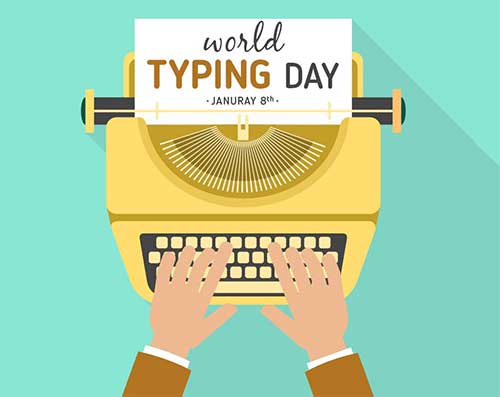
World Day for Audiovisual Heritage, observed annually on October 27, is an international event dedicated to preserving and appreciating audiovisual records as critical pieces of our global cultural heritage. Audiovisual materials—films, television broadcasts, audio recordings, and multimedia—are invaluable resources that capture past events' voices, sights, and emotions. These records are vital to preserving culture, documenting history, and providing an authentic glimpse into the lives of previous generations.

This day highlights the urgent need to protect these materials against the deterioration and loss caused by environmental factors, technological obsolescence, and neglect. The event is spearheaded by UNESCO and the Coordinating Council of Audiovisual Archives Associations (CCAAA). It seeks to raise awareness about the importance of audiovisual preservation for current and future generations.
The Origins and Purpose of World Day for Audiovisual Heritage
UNESCO established World Day for Audiovisual Heritage in 2005 to promote global awareness of the value of audiovisual archives. The day underscores the need to recognize the historical and cultural significance of these records and support preservation efforts that combat their gradual deterioration. Each year, UNESCO collaborates with audiovisual archivists, historians, cultural organizations, and governments to host events and campaigns that educate the public about the fragility and importance of preserving audiovisual heritage.
Why Audiovisual Records Matter
Audiovisual records offer a unique glimpse into the past, bringing history to life in ways written records often cannot. Through moving images and sound, we can witness the evolution of societies, experience significant events firsthand, and hear the voices of historical figures. Audiovisual archives are indispensable in education, as they provide robust, immersive resources that can teach future generations about cultural values, social issues, scientific advances, and more.
For instance, rare film footage of early 20th-century events, recordings of landmark political speeches, and traditional songs passed down through generations provide authentic, engaging insights into the times they depict. By preserving these records, we ensure that these invaluable windows into the past remain accessible.
The Challenges of Audiovisual Preservation
Despite their immense value, audiovisual materials face unique preservation challenges. They are often stored on fragile media, such as film, magnetic tapes, and vinyl records, which can deteriorate quickly if not stored in optimal conditions. Additionally, with rapid technological advancement, playback equipment has become obsolete, making it increasingly difficult to access older formats.
Humidity, temperature fluctuations, and exposure to light can also damage films, tapes, and photographs. In some cases, audiovisual materials might only exist in a single copy, heightening the risk of permanent loss if preservation measures are not taken. The challenges are complex, but through modern digitization efforts, archivists and cultural organizations are working to create durable, accessible digital copies of these materials.
The Role of UNESCO and CCAAA
UNESCO and the CCAAA play central roles in raising awareness and driving international efforts to preserve audiovisual heritage. They work to encourage governments and cultural organizations to allocate resources to audiovisual preservation and promote the adoption of best practices in archiving, such as climate-controlled storage, digital conversion, and cataloging.
These organizations host events each year on World Day for Audiovisual Heritage, including film screenings, public lectures, panel discussions, and workshops. These events bring attention to specific archives, collections, and at-risk materials. The goal is to rally support for local and international preservation initiatives and ensure that audiovisual heritage continues to be accessible to future generations.
How Digital Technology Supports Audiovisual Preservation
Digital technology has revolutionized audiovisual preservation, making it possible to save and share these fragile materials in unimaginable ways. Digitization enables archivists to transfer fragile materials onto stable digital platforms, preserving content and enhancing accessibility.
Through digitization, valuable records can be stored on digital servers and shared with global audiences via online platforms. For example, libraries and museums worldwide, such as the Library of Congress and the British Film Institute, have digitized significant portions of their audiovisual collections and made them accessible through websites and streaming platforms.
However, even digital preservation comes with challenges, such as ensuring compatibility with future technologies and maintaining robust data storage solutions to prevent data loss. Still, digitization remains one of the most effective methods for preserving and democratizing access to audiovisual heritage.
Audiovisual Heritage and Cultural Identity
Audiovisual archives hold immense value as part of a community's cultural identity. They preserve language, traditions, arts, and stories, many of which might otherwise be forgotten. For example, traditional music recordings, folk dances, and interviews with indigenous communities allow people worldwide to experience the rich diversity of cultural expression.
In this sense, audiovisual heritage plays a role similar to other observances, such as Intersex Awareness Day Acknowledging Diversity and Promoting Understanding, which recognizes the unique identities within human communities. By celebrating diversity in all its forms, audiovisual archives create pathways to understanding different cultures, beliefs, and histories, fostering mutual respect among people around the globe.
Global Observances and Events on World Day for Audiovisual Heritage
On World Day for Audiovisual Heritage, numerous events take place worldwide to celebrate the rich legacy of audiovisual archives. Film screenings of historical footage, exhibitions of early photography, live music performances featuring traditional songs, and panel discussions on preservation techniques are just a few examples.
Organizations also use this day to highlight specific collections needing preservation, raise awareness about endangered materials, and rally support from governments, institutions, and the general public. These events serve as a reminder of the cultural richness captured in audiovisual materials and the collective responsibility to protect them.
Inspiring Examples of Audiovisual Heritage Preservation
Several inspiring projects highlight the ongoing efforts to preserve audiovisual heritage. For instance:
• The Library of Congress in the United States has digitized a vast archive of historical sound recordings and films, making them accessible to the public.
• UNESCO's Memory of the World Programme catalogs and protects audiovisual materials with unique historical value, from early sound recordings to rare films.
• The British Film Institute (BFI) holds one of the most extensive film archives in the world. It preserves British film heritage and makes it available to audiences through online platforms.
These projects demonstrate how preserving audiovisual materials can keep cultural heritage alive and accessible.
The Future of Audiovisual Heritage Preservation
Technological advancements in artificial intelligence (AI) and machine learning hold exciting potential for audiovisual heritage preservation. AI-powered tools can restore damaged recordings, enhance image quality, and even transcribe audio content, making these records more accessible to search and study. These technologies could streamline the preservation process and allow more archives to be processed and cataloged efficiently.
The future of audiovisual heritage lies in the balance of digital preservation, ongoing research, and the support of international communities who value and protect these invaluable resources.
How Individuals Can Contribute to Audiovisual Preservation
Individuals can play a vital role in preserving audiovisual heritage by supporting organizations and initiatives focused on this cause. Simple steps, such as participating in events, donating to preservation funds, or even archiving family media collections, help to raise awareness and protect these cultural assets.
People can also volunteer with local museums, libraries, or preservation groups to assist in archiving projects, cataloging records, or digitizing old media. Personal involvement is a powerful way to contribute to the longevity and accessibility of audiovisual heritage.
Conclusion
World Day for Audiovisual Heritage reminds us to safeguard our cultural memory. Audiovisual materials connect us to history dynamically, offering valuable lessons, preserving diverse cultural identities, and inspiring future generations. By acknowledging the importance of preservation and embracing modern technologies, we can ensure that these useful pieces of history remain available, enriching our understanding of the world and our place within it.
#WorldDayForAudiovisualHeritage #AudiovisualRecords #UNESCO



